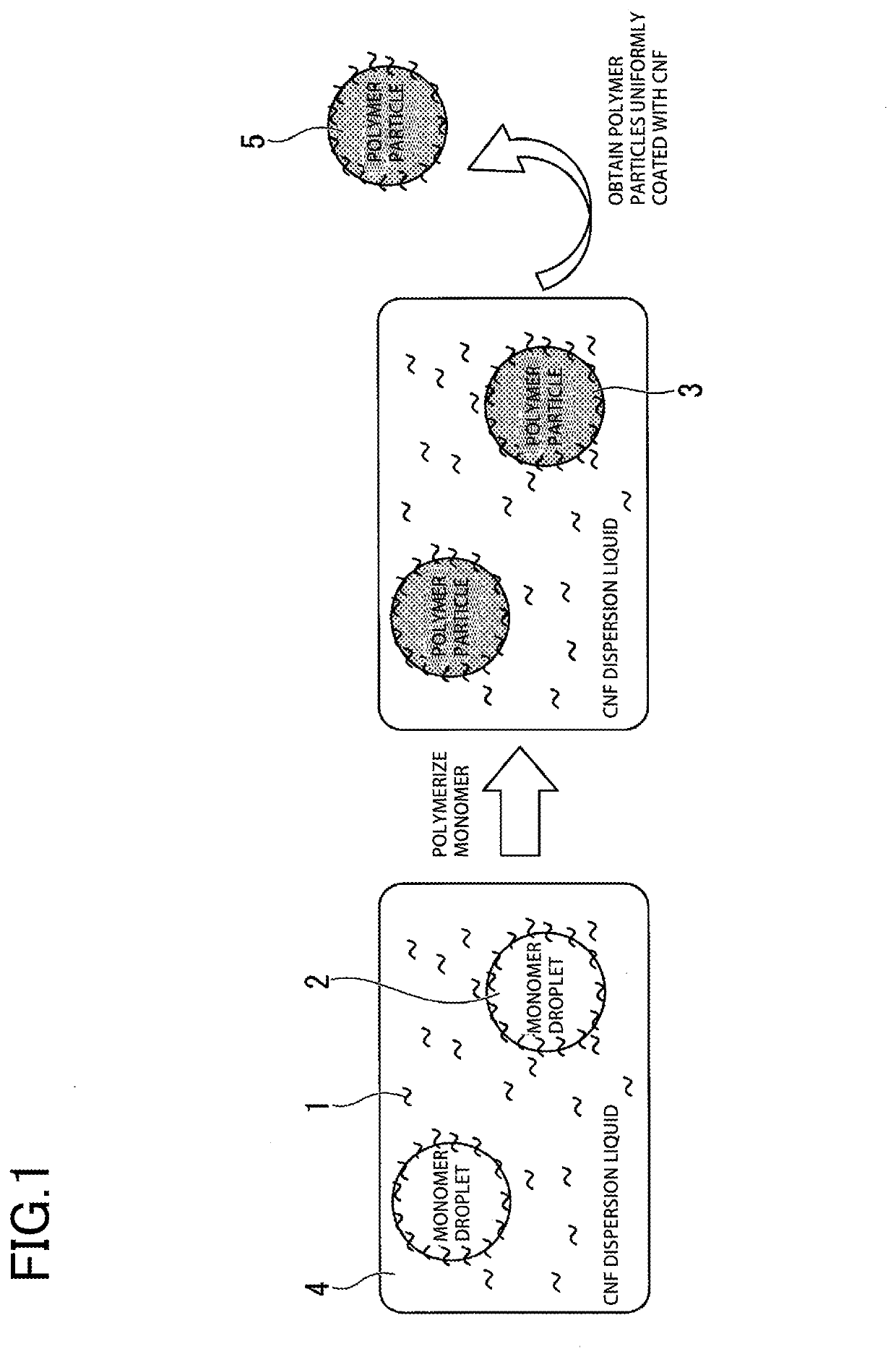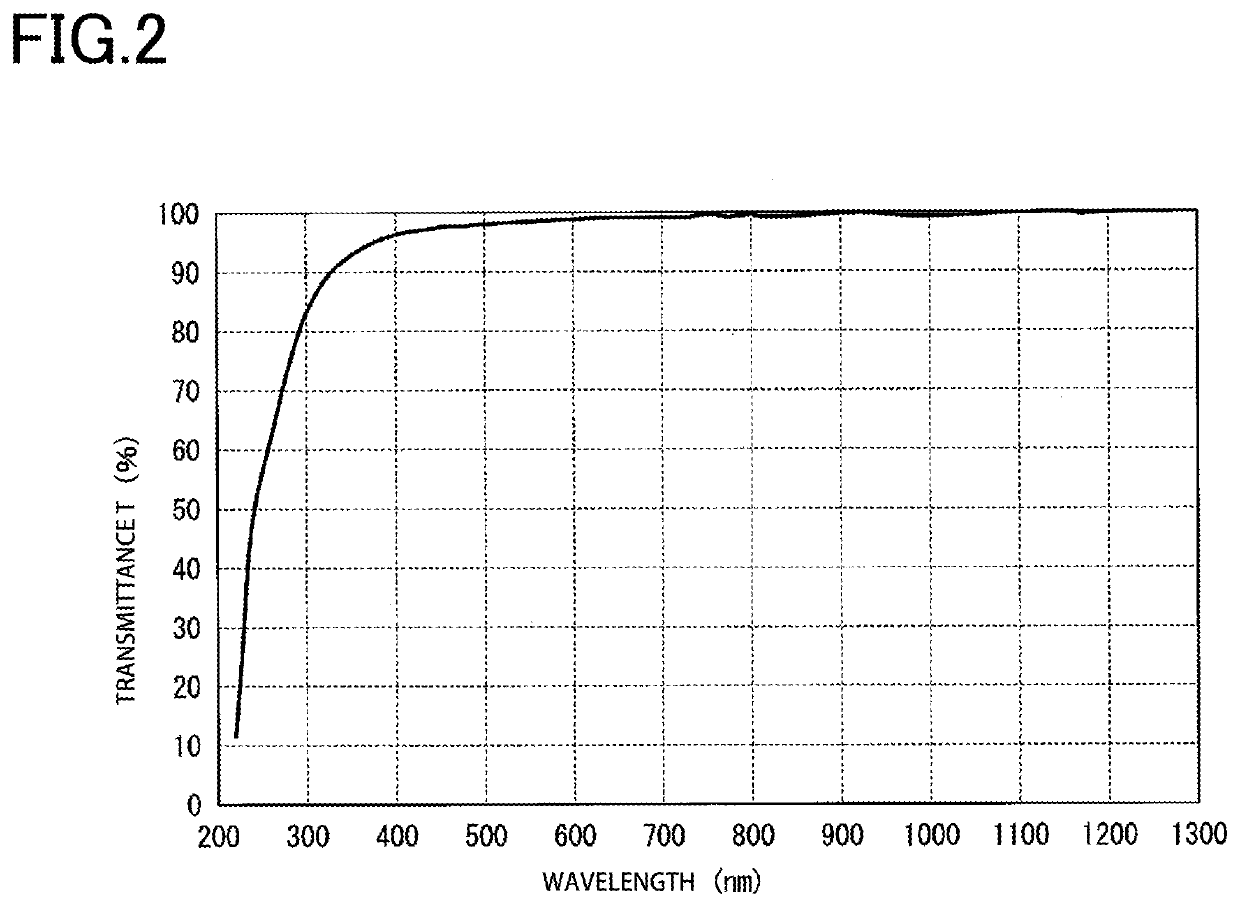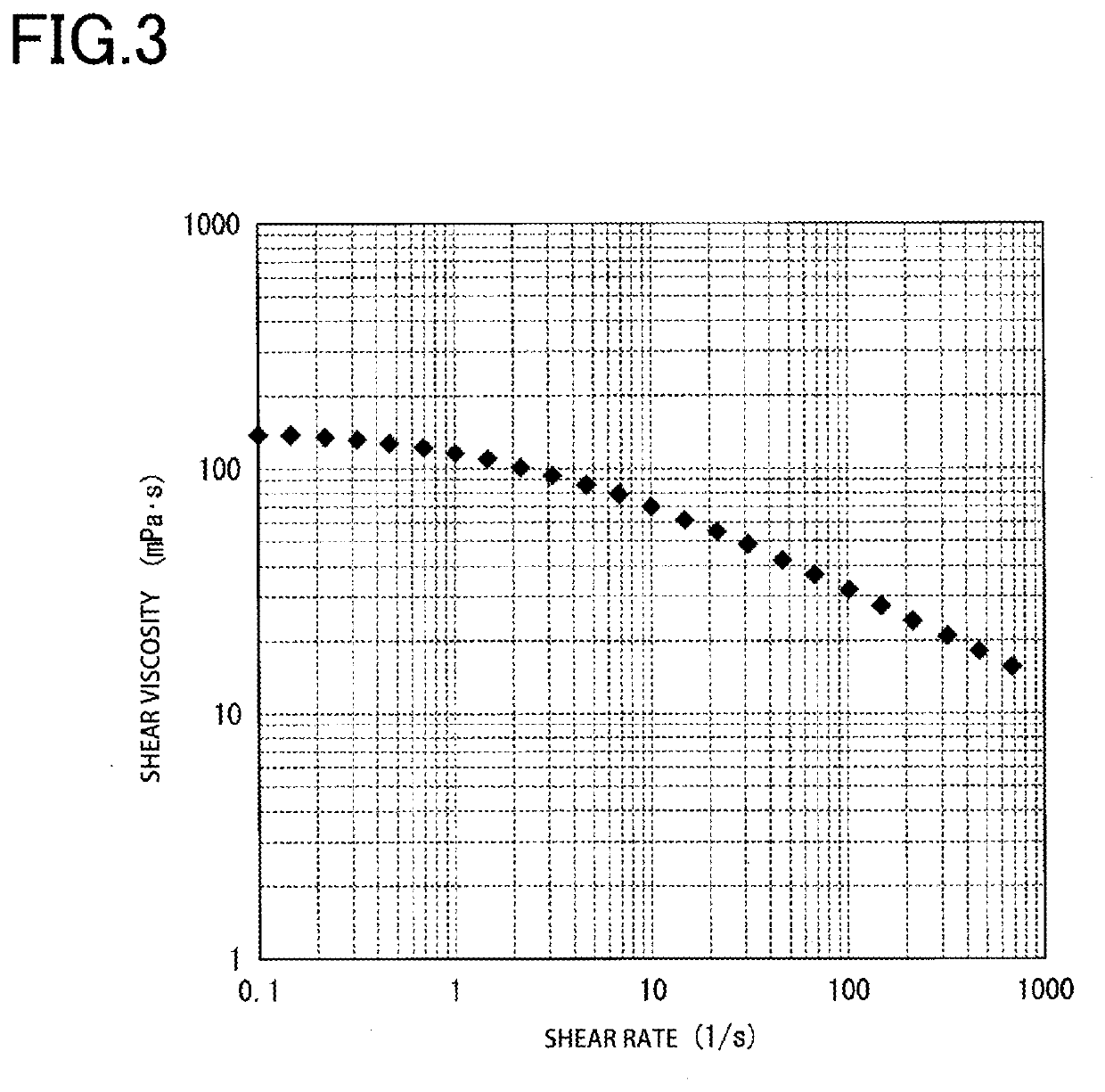Composite particles, method of producing composite particles, dry powder, and molding resin composition
a technology of composite particles and composite particles, which is applied in the direction of cellulose coatings, medical preparations, make-up, etc., can solve the problems of unavoidable low solid content concentration of obtained cnf dispersion liquid, osmotic effect, and reduced energy required for micronizing raw cellulose materials, etc., to achieve easy handling, easy to form composites, and easy to handle
- Summary
- Abstract
- Description
- Claims
- Application Information
AI Technical Summary
Benefits of technology
Problems solved by technology
Method used
Image
Examples
first embodiment
[0065]With reference to the drawings, a first embodiment of the present invention will be described.
[0066]
[0067]First, composite particles 5 of finely-disintegrated cellulose / polymer particles according to a first embodiment of the present invention will be described. FIG. 1 is a schematic diagram illustrating an o / w Pickering emulsion using cellulose nanofibers (also termed CNF, cellulose or finely-disintegrated cellulose hereinafter) 1, and composite particles 5 obtained by polymerizing a polymerizable monomer in the emulsion.
[0068]The composite particles 5 include at least one type of polymer particles 3 each having a surface which is covered with a coating formed of the finely-disintegrated cellulose 1. The polymer particles 3 and the finely-disintegrated cellulose 1 are bonded together in an inseparable state to form composite particles.
[0069]As shown in FIG. 1, the cellulose 1 is adsorbed to the surfaces of monomer droplets 2 dispersed in a dispersion liquid 4 to stabilize an ...
second embodiment
[0148]Next, a second embodiment of the present invention will be described. Composite particles 5B according to the present embodiment are different from the composite particles of the first embodiment in that a functional component other than cellulose is provided to the finely-disintegrated cellulose on the surfaces of the particles. In the following description, like reference signs designate common parts already described to omit duplicate description.
[0149]
[0150]The composite particles (metal nanoparticle-carrying finely-disintegrated cellulose / polymer composite particles) 5B comprise a functional component, i.e., a metal, other than cellulose, in addition to the finely-disintegrated cellulose 1 on the surfaces of the composite particles 5 of the first embodiment.
[0151]The composite particles 5B can be obtained by directly forming metal microparticles (also termed nanoparticles hereinafter) by reduction and precipitation on the finely-disintegrated cellulose 1 that is present o...
third embodiment
[0193]Next, a third embodiment of the present invention will be described. Composite particles 5C of the present embodiment, when compared to the composite particles 5B of the second embodiment, are different in that the production method does not include step 4A but that a functional component other than cellulose is directly provided to the finely-disintegrated cellulose 1 obtained in step 1A, followed by forming an emulsion. In the following description, like reference signs designate common parts already described to omit duplicate description.
[0194]
[0195]The method of producing composite particles 5C include a step of defibrating raw cellulose materials in a solvent to obtain a dispersion liquid of finely-disintegrated cellulose (step 1A); a step of producing a micronized-cellulose composite 1C by compounding a functional component other than cellulose with the finely-disintegrated cellulose 1 in the dispersion liquid of finely-disintegrated cellulose (auxiliary step 1A); a ste...
PUM
| Property | Measurement | Unit |
|---|---|---|
| Fraction | aaaaa | aaaaa |
| Fraction | aaaaa | aaaaa |
| Electric charge | aaaaa | aaaaa |
Abstract
Description
Claims
Application Information
 Login to View More
Login to View More - R&D
- Intellectual Property
- Life Sciences
- Materials
- Tech Scout
- Unparalleled Data Quality
- Higher Quality Content
- 60% Fewer Hallucinations
Browse by: Latest US Patents, China's latest patents, Technical Efficacy Thesaurus, Application Domain, Technology Topic, Popular Technical Reports.
© 2025 PatSnap. All rights reserved.Legal|Privacy policy|Modern Slavery Act Transparency Statement|Sitemap|About US| Contact US: help@patsnap.com



